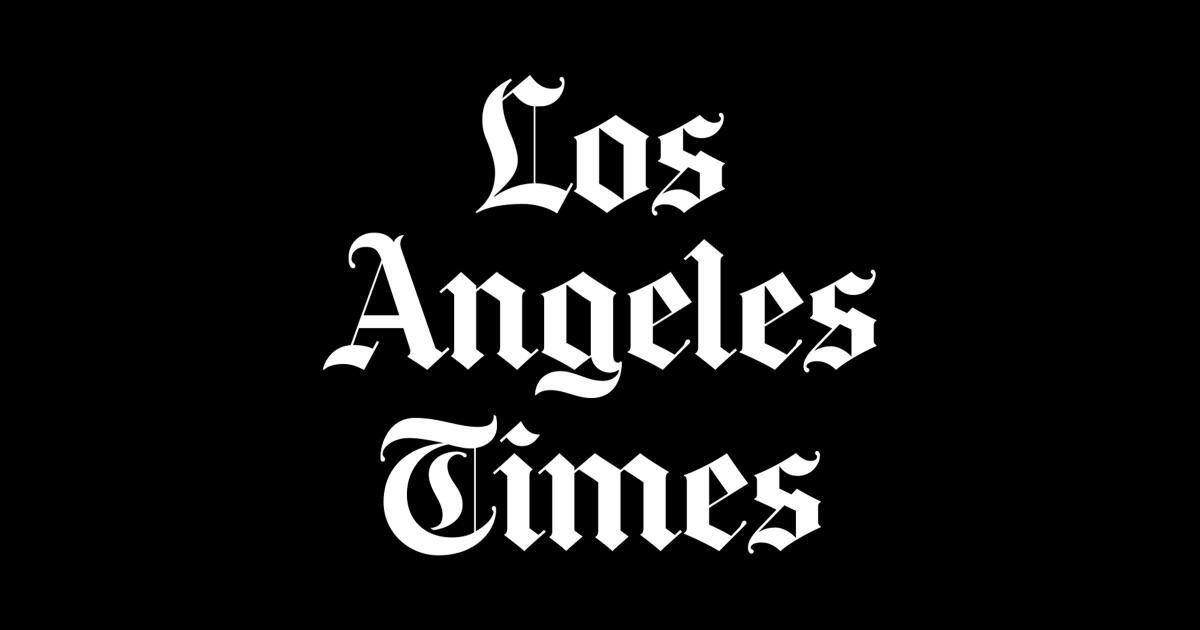Politics
Israel launches retaliatory air strikes on Iran

War in the Middle East escalated yet again Friday as Israel bombed targets in Iran in a spiraling pattern of attack and retaliation that has inflamed the region.
Israel said it was punishing the Islamic Republic for its missile barrage this month aimed at Israeli military installations and other sites. Those attacks came in response to Israel’s assassination of the top leader of the Iran-backed Hezbollah militia and other senior commanders in Lebanon.
It was a rare direct confrontation between two of the most heavily armed countries in the Middle East and augured ominously for easing hostilities and any future truce.
“In response to months of continuous attacks from the regime in Iran against the State of Israel — right now the Israel Defense Forces is conducting precise strikes on military targets in Iran,” the Israeli military said in a statement. “Like every other sovereign country in the world, the State of Israel has the right and the duty to respond.”
In Tehran, residents reported explosions around the capital and the nearby city of Karaj. Possible targets are missile sites controlled by the Islamic Revolutionary Guard Corps on the western edge of Tehran. Smoke could be seen wafting over the night skyline in that direction. From Tehran, smoke was also seen near the city of Shahriyar, a reputed site of underground missile storage facilities.
In Israel, Prime Minister Benjamin Netanyahu retreated to a bunker underneath the Defense Ministry in Tel Aviv, where he was joined by Defense Minister Yoav Gallant and other senior leaders. Netanyahu’s office released a photo of the group gathered around a table.
In the weeks leading up to the attack, Biden administration officials repeatedly urged Israel to avoid targeting Iran’s oil industry — lest world markets be harmed — or its nuclear power facilities.
The White House said it was notified by Israel in advance of the strikes. In a statement Friday night it said that Israel was conducting “an exercise of self-defense and in response to Iran’s ballistic missile attack against Israel on October 1.”
In a statement Friday night it said that Israel was conducting “an exercise of self-defense and in response to Iran’s ballistic missile attack against Israel on October 1.”
The strikes came a day after U.S. Secretary of State Antony J. Blinken departed the region, where he completed several days of shuttle diplomacy between Israel, Saudi Arabia and other countries in hopes of re-starting cease-fire talks for the Israel-Hamas war in the Gaza Strip.
Countries in the region had been bracing for Israel’s response to Iran after Israeli Prime Minister Benjamin Netanyahu warned Tehran would “pay a big price” for attacking Israel.
Until now, the two countries had largely avoided direct conflict, instead waging a decades-long “shadow war” through, in Iran’s case, proxy militias, or, in Israel’s case, secret sabotage missions and assassinations.
But in a region inflamed over the last year by brutal fighting between Israel and the Palestinian Hamas militant group in the Gaza Strip, Israel and Iran moved steadily closer to actual war.
Just over a year ago, Iran-backed Hamas invaded southern Israel, killing about 1,200 people and seizing around 250 hostages. Israel in response launched its relentless war on the Gaza Strip, and Hezbollah announced it would step up its rocketing of northern Israel in solidarity with Hamas.
Israel’s military has since killed more than 42,000 Palestinians in Gaza on its southern flank, according to the Health Ministry there. Entire neighborhoods in Gaza have been destroyed, as has much of Hamas, its leaders and infrastructure. On Oct. 18, Israel announced it had killed the senior leader of Hamas, Yahya Sinwar.
By then, Israel had shifted major military operations to its northern border with Lebanon. From inside Lebanon over the last 12 months, Hezbollah had been firing thousands of rockets and missiles into Israel, driving some 70,000 Israelis from their towns and killing a small number. Israel’s strikes on Lebanon had also displaced tens of thousands, until Israel’s expanded bombardments in late September.
On Sept. 30, Israel launched its first ground invasion of Lebanon in 18 years and said it was attacking Hezbollah targets. But its bombardments expanded across Lebanon, to the Bekaa Valley and even Tripoli in the north while repeatedly pounding the capital, Beirut. More than 2,000 Lebanese have been killed and a million displaced, according to the Lebanese health ministry.
Hezbollah is Iran’s most important proxy in the Middle East. Israel’s assassination on Sept. 27 of Hezbollah’s longtime leader, Hassan Nasrallah, triggered Iran’s retaliation four days later — a barrage of nearly 200 ballistic missiles. Backed by the U.S. and British air forces, Israel was able to intercept most of the projectiles. Still, it was only the second time Iran had attacked Israel directly, the first being in April; both times, the damage in Israel was minimal.
Israel vowed retaliation, and the region has been bracing for that ever since.
U.S.-led efforts to broker a Gaza cease-fire — aimed at freeing the remaining hostages held in Gaza, stopping the Israeli bombardment and making possible the delivery of desperately needed food and medicine — have failed thus far.
Wilkinson reported from Washington, special correspondent Mostaghim from Tehran. Staff writer Laura King in Washington contributed to this report.

Politics
Video: Fed Chair Responds to Inquiry on Building Renovations

new video loaded: Fed Chair Responds to Inquiry on Building Renovations
transcript
transcript
Fed Chair Responds to Inquiry on Building Renovations
Federal prosecutors opened an investigation into whether Jerome H. Powell, the Federal Reserve chair, lied to Congress about the scope of renovations of the central bank’s buildings. He called the probe “unprecedented” in a rare video message.
-
“Good evening. This new threat is not about my testimony last June or about the renovation of the Federal Reserve buildings. This is about whether the Fed will be able to continue to set interest rates based on evidence and economic conditions, or whether instead, monetary policy will be directed by political pressure or intimidation.” “Well, thank you very much. We’re looking at the construction. Thank you.”

By Nailah Morgan
January 12, 2026
Politics
San Antonio ends its abortion travel fund after new state law, legal action

NEWYou can now listen to Fox News articles!
San Antonio has shut down its out-of-state abortion travel fund after a new Texas law that prohibits the use of public funds to cover abortions and a lawsuit from the state challenging the city’s fund.
City Council members last year approved $100,000 for its Reproductive Justice Fund to support abortion-related travel, prompting Texas Attorney General Ken Paxton to sue over allegations that the city was “transparently attempting to undermine and subvert Texas law and public policy.”
Paxton claimed victory in the lawsuit on Friday after the case was dismissed without a finding for either side.
WYOMING SUPREME COURT RULES LAWS RESTRICTING ABORTION VIOLATE STATE CONSTITUTION
Texas Attorney General Ken Paxton claimed victory in the lawsuit after the case was dismissed without a finding for either side. (Hannah Beier/Bloomberg via Getty Images)
“Texas respects the sanctity of unborn life, and I will always do everything in my power to prevent radicals from manipulating the system to murder innocent babies,” Paxton said in a statement. “It is illegal for cities to fund abortion tourism with taxpayer funds. San Antonio’s unlawful attempt to cover the travel and other expenses for out-of-state abortions has now officially been defeated.”
But San Antonio’s city attorney argued that the city did nothing wrong and pushed back on Paxton’s claim that the state won the lawsuit.
“This litigation was both initiated and abandoned by the State of Texas,” the San Antonio city attorney’s office said in a statement to The Texas Tribune. “In other words, the City did not drop any claims; the State of Texas, through the Texas Office of the Attorney General, dropped its claims.”
Texas Attorney General Ken Paxton said he will continue opposing the use of public funds for abortion-related travel. (Justin Lane/Reuters)
Paxton’s lawsuit argued that the travel fund violates the gift clause of the Texas Constitution. The state’s 15th Court of Appeals sided with Paxton and granted a temporary injunction in June to block the city from disbursing the fund while the case moved forward.
Gov. Greg Abbott in August signed into law Senate Bill 33, which bans the use of public money to fund “logistical support” for abortion. The law also allows Texas residents to file a civil suit if they believe a city violated the law.
“The City believed the law, prior to the passage of SB 33, allowed the uses of the fund for out-of-state abortion travel that were discussed publicly,” the city attorney’s office said in its statement. “After SB 33 became law and no longer allowed those uses, the City did not proceed with the procurement of those specific uses—consistent with its intent all along that it would follow the law.”
TRUMP URGES GOP TO BE ‘FLEXIBLE’ ON HYDE AMENDMENT, IGNITING BACKLASH FROM PRO-LIFE ALLIES
Texas Gov. Greg Abbott signed a law in August that blocks cities from using public money to help cover travel or other costs related to abortion. (Antranik Tavitian/Reuters)
CLICK HERE TO DOWNLOAD THE FOX NEWS APP
The broader Reproductive Justice Fund remains, but it is restricted to non-abortion services such as home pregnancy tests, emergency contraception and STI testing.
The city of Austin also shut down its abortion travel fund after the law was signed. Austin had allocated $400,000 to its Reproductive Healthcare Logistics Fund in 2024 to help women traveling to other states for an abortion with funding for travel, food and lodging.
Politics
California Atty. Gen. Rob Bonta opts against running for governor. Again.

California Atty. Gen. Rob Bonta announced Sunday that he would not run for California governor, a decision grounded in his belief that his legal efforts combating the Trump administration as the state’s top prosecutor are paramount at this moment in history.
“Watching this dystopian horror come to life has reaffirmed something I feel in every fiber of my being: in this moment, my place is here — shielding Californians from the most brazen attacks on our rights and our families,” Bonta said in a statement. “My vision for the California Department of Justice is that we remain the nation’s largest and most powerful check on power.”
Bonta said that President Trump’s blocking of welfare funds to California and the fatal shooting of a Minnesota mother of three last week by a federal immigration agent cemented his decision to seek reelection to his current post, according to Politico, which first reported that Bonta would not run for governor.
Bonta, 53, a former state lawmaker and a close political ally to Gov. Gavin Newsom, has served as the state’s top law enforcement official since Newsom appointed him to the position in 2021. In the last year, his office has sued the Trump administration more than 50 times — a track record that would probably have served him well had he decided to run in a state where Trump has lost three times and has sky-high disapproval ratings.
Bonta in 2024 said that he was considering running. Then in February he announced he had ruled it out and was focused instead on doing the job of attorney general, which he considers especially important under the Trump administration. Then, both former Vice President Kamala Harris and Sen. Alex Padilla (D-Calif.) announced they would not run for governor, and Bonta began reconsidering, he said.
“I had two horses in the governor’s race already,” Bonta told The Times in November. “They decided not to get involved in the end. … The race is fundamentally different today, right?”
The race for California governor remains wide open. Newsom is serving the final year of his second term and is barred from running again because of term limits. Newsom has said he is considering a run for president in 2028.
Former Rep. Katie Porter — an early leader in polls — late last year faltered after videos emerged of her screaming at an aide and berating a reporter. The videos contributed to her dropping behind Riverside County Sheriff Chad Bianco, a Republican, in a November poll released by the UC Berkeley Institute of Governmental Studies and co-sponsored by The Times.
Porter rebounded a bit toward the end of the year, a poll by the Public Policy Institute of California showed, however none of the candidates has secured a majority of support and many voters remain undecided.
California hasn’t elected a Republican governor since 2006, Democrats heavily outnumber Republicans in the state, and many are seething with anger over Trump and looking for Democratic candidates willing to fight back against the current administration.
Bonta has faced questions in recent months about spending about $468,000 in campaign funds on legal advice last year as he spoke to federal investigators about alleged corruption involving former Oakland Mayor Sheng Thao, who was charged in an alleged bribery scheme involving local businessmen David Trung Duong and Andy Hung Duong. All three have pleaded not guilty.
According to his political consultant Dan Newman, Bonta — who had received campaign donations from the Duong family — was approached by investigators because he was initially viewed as a “possible victim” in the alleged scheme, though that was later ruled out. Bonta has since returned $155,000 in campaign contributions from the Duong family, according to news reports.
Bonta is the son of civil rights activists Warren Bonta, a white native Californian, and Cynthia Bonta, a native of the Philippines who immigrated to the U.S. on a scholarship in 1965. Bonta, a U.S. citizen, was born in Quezon City, Philippines, in 1972, when his parents were working there as missionaries, and immigrated with his family to California as an infant.
In 2012, Bonta was elected to represent Oakland, Alameda and San Leandro as the first Filipino American to serve in California’s Legislature. In Sacramento, he pursued a string of criminal justice reforms and developed a record as one of the body’s most liberal members.
Bonta is married to Assemblywoman Mia Bonta (D-Alameda), who succeeded him in the state Assembly, and the couple have three children.
Times staff writer Dakota Smith contributed to this report.
-

 Detroit, MI1 week ago
Detroit, MI1 week ago2 hospitalized after shooting on Lodge Freeway in Detroit
-

 Technology6 days ago
Technology6 days agoPower bank feature creep is out of control
-

 Dallas, TX4 days ago
Dallas, TX4 days agoAnti-ICE protest outside Dallas City Hall follows deadly shooting in Minneapolis
-

 Delaware3 days ago
Delaware3 days agoMERR responds to dead humpback whale washed up near Bethany Beach
-

 Dallas, TX1 week ago
Dallas, TX1 week agoDefensive coordinator candidates who could improve Cowboys’ brutal secondary in 2026
-

 Iowa6 days ago
Iowa6 days agoPat McAfee praises Audi Crooks, plays hype song for Iowa State star
-

 Montana2 days ago
Montana2 days agoService door of Crans-Montana bar where 40 died in fire was locked from inside, owner says
-

 Health1 week ago
Health1 week agoViral New Year reset routine is helping people adopt healthier habits




















